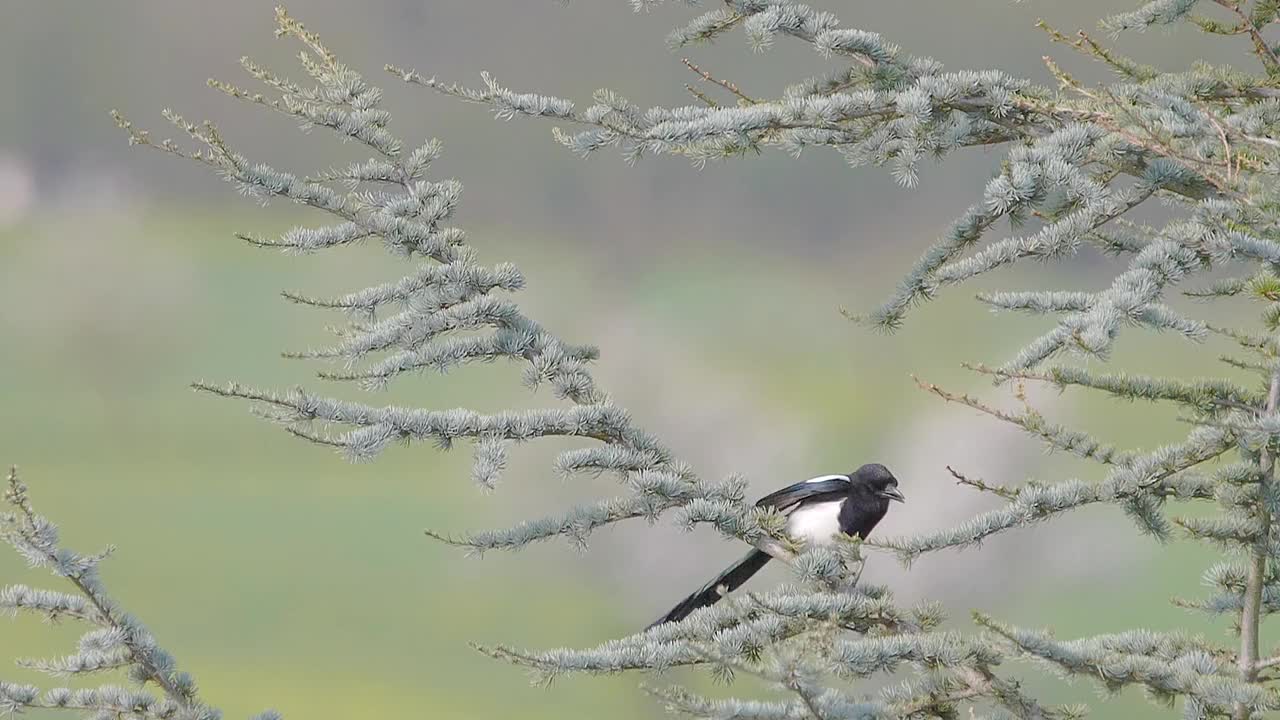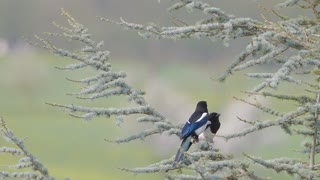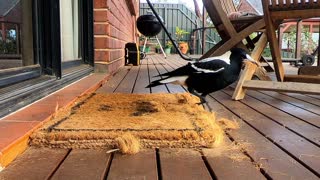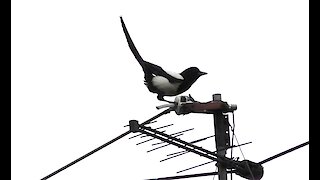Premium Only Content

This is Elster Magpie bird
The Eurasian magpie or common magpie (Pica pica) is a resident breeding bird throughout the northern part of the Eurasian continent. It is one of several birds in the crow family designated magpies, and belongs to the Holarctic radiation of "monochrome" magpies. In Europe, "magpie" is used by English speakers as a synonym for the Eurasian magpie: the only other magpie in Europe is the Iberian magpie (Cyanopica cooki), which is limited to the Iberian Peninsula.
The Eurasian magpie is one of the most intelligent birds, and it is believed to be one of the most intelligent of all non-human animals.
The expansion of its nidopallium is approximately the same in its relative size as the brain of chimpanzees, gorillas, orangutans and humans.
It is the only bird known to pass the mirror test, along with very few other non-avian species.
The adult male of the nominate subspecies, P. p. pica, is 44–46 cm (17–18 in) in length, of which more than half is the tail. The wingspan is 52–62 cm (20–24 in).
The head, neck and breast are glossy black with a metallic green and violet sheen; the belly and scapulars (shoulder feathers) are pure white; the wings are black glossed with green or purple, and the primaries have white inner webs, conspicuous when the wing is open. The graduated tail is black, glossed with green and reddish purple. The legs and bill are black; the iris is dark brown.
The plumage of the sexes is similar but females are slightly smaller. The tail feathers of both sexes are quite long, about 12–28 cm long. Males of the nominate subspecies weigh 210–272 g (7.4–9.6 oz) while females weigh 182–214 g (6.4–7.5 oz). The young resemble the adults, but are at first without much of the gloss on the sooty plumage. The young have the malar region pink, and somewhat clear eyes. The tail is much shorter than the adults.
The subspecies differ in their size, the amount of white on their plumage and the colour of the gloss on their black feathers. The Asian subspecies P. p. bactriana has more extensive white on the primaries and a prominent white rump.
Adults undergo an annual complete moult after breeding. Moult begins in June or July and ends in September or October. The primary flight feathers are replaced over a period of three months. Juvenile birds undergo a partial moult beginning about one month later than the adult birds in which their body feathers are replaced but not those of the wings or the tail.
Eurasian magpies have a well-known call. It is a choking chatter "chac-chac" or a repetitive "chac-chac-chac-chac". The young also emit the previous call, although they also emit an acute call similar to a "Uik Uik", which may resemble the barking of a small dog. Both adults and young can emit a kind of hiss barely noticeable from afar.
-
 0:19
0:19
ViralHog
5 years agoMagpie Pursues Postman
32 -
 0:16
0:16
ViralHog
7 years agoMagpie Coming at Ya
26 -
 0:59
0:59
bestfunnytv1
4 years agoelster after heave rain
20 -
 0:58
0:58
ViralHog
5 years ago $0.06 earnedMagpie Destroys Doormat
437 -
 0:31
0:31
irvet20065
5 years ago $0.05 earnedMagpie equilibrist
87 -
 0:43
0:43
ViralHog
4 years agoMagpie Gets Rowdy During Rugby
159 -
 0:38
0:38
ViralHog
5 years agoMagpie Morning Aerobics
122 -
 0:42
0:42
ViralHog
4 years agoSmart Magpie Uses Sprinkler Keep Cool
188 -
 1:12
1:12
ViralHog
4 years ago $1.42 earnedBoy Swooped By Psycho Magpie
3.88K -
 2:30
2:30
ViralHog
5 years ago $0.13 earnedMagpie Asserts its Authority
3.69K